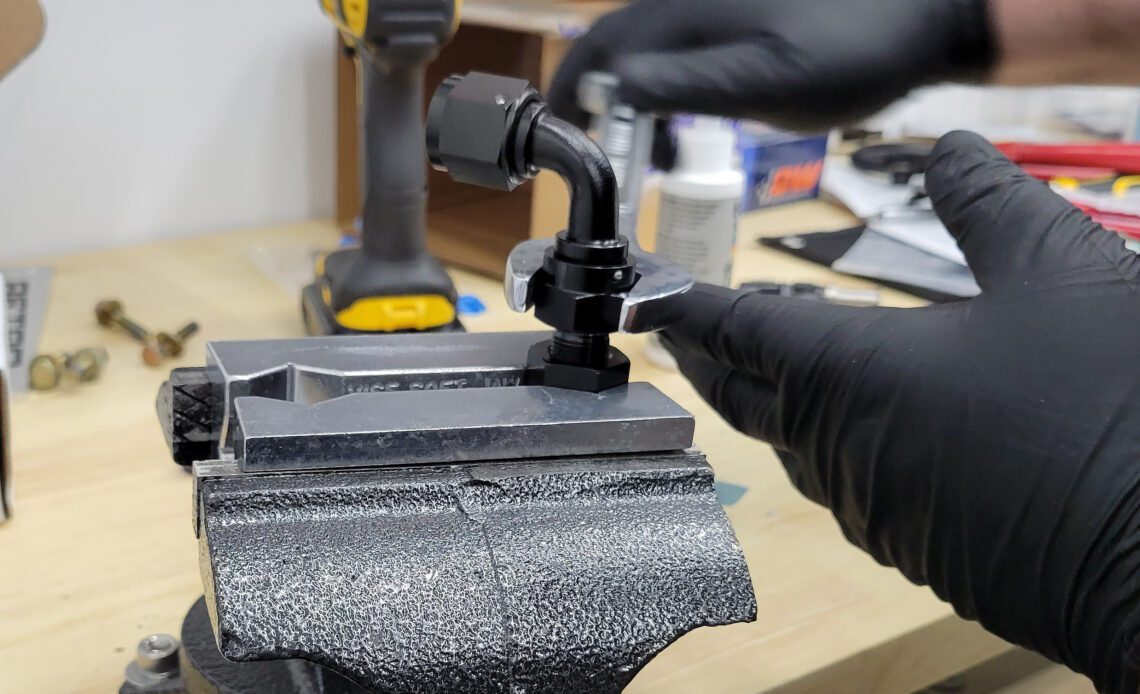In the world of high-performance engines, there is nothing more ubiquitous than the image of stainless-steel braided lines, outfitted with the iconic red and blue AN fittings, carrying vital fluids and gasses to their respective components. While the imagery might be iconic, the components don’t exist for sheer aesthetics. The robust lines and fittings are just as functional as they are good-looking.
The one downside, if you can call it that, to these lines and fittings is the additional steps needed to properly assemble them as opposed to just slipping a rubber hose over a nipple on a component and tightening a worm clamp. Of course, the additional security and strength of the connections — no to mention the aesthetics, if we’re being honest — far outweigh the effort required to properly plumb your system.
While push-lock style AN fittings and hoses do exist, they don’t offer the pressure rating of the traditional AN fittings and braided hose. Since they are a totally different style of fitting and hose, and their assembly is much different, we won’t be looking at those, today.
Measuring your hoses can be a little tricky, since you need to account for the bit of hose that sits inside of the fitting. Also note the tightly wrapped electrical tape before marking the cut. This helps prevent the cut ends from fraying.
Hose In Different Area Codes
There are a number of different braided hoses on the market today. First and foremost, as we covered in this article, regardless of what type of hose you want to use, you will want to stick to quality manufacturers. The discount/knockoff brands might look nice on paper (or in the Amazon/eBay listing) but at the end of the day, a failure can cost far more than just the price of the replacement hose.
The two main types of hose we’ll be covering (since they both use the same tools and procedures in assembly) are the stainless braided and nylon braided types, so let’s look at them. The first, and most familiar, is the stainless-steel braided line. This line is typically composed of a rubber core, which can vary in composition based on manufacturer, from basic rubber in low-end hose to high-tech synthetic elastomers in higher-end hose. That core will be flexible and all-fluid-safe, so compatible with gasoline, diesel, ethanol, and methanol, as well as oil, water, and chemical coolants. There is also a PTFE-core variant, but since it requires different hose ends, it’s outside the scope of this…
Click Here to Read the Full Original Article at DragzineDragzine…

